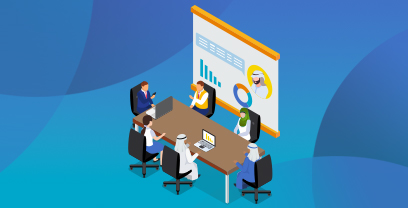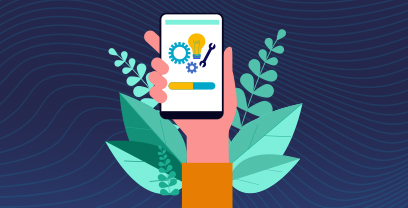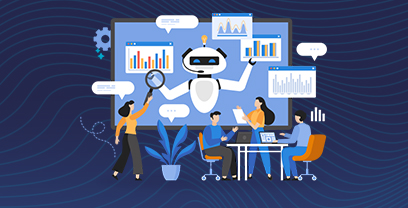Procurement is essential for acquiring goods and services needed for business operations at the right time, the right price, and the right quality. It significantly impacts an organization’s cost efficiency and supplier relationships.
Procurement extends far beyond mere transactions; it is a vital part of business strategy that ensures organizations secure high-quality goods at competitive prices. By maintaining a reliable supply base, procurement not only supports business continuity but also fosters innovation and promotes sustainability.
In this article, we will explore what procurement is, its various types, the procurement process, and the solutions available to streamline procurement activities, illustrated with real-world success stories.
What Is Procurement?
Simply put, procurement is the process of strategically sourcing and acquiring goods and services that an organization needs to operate and fulfill its business objectives, while managing the relationships with the suppliers of those goods and services
For procurement managers, mastering this process requires a keen understanding of market dynamics, supplier relationships, and internal business needs. It’s not just about buying; it’s about strategically sourcing the best materials or services at the best price to achieve the best outcomes. It’s also about achieving financial outcomes to impact the bottom-line, managing supplier risk, performance and more
Is Procurement the Same As Purchasing?
While procurement and purchasing are often used interchangeably, they refer to distinct aspects of the overall function.
Purchasing refers to the transactional tasks involved in buying goods or services, including, internal approvals, order placement and invoice processing for payment, focusing on the immediate needs of the organization.
Procurement, on the other hand, encompasses a broader set of strategic activities aimed at optimizing the numerous activities involved.. It covers not only the transactional purchasing activities but also strategic activities such as supplier relationship management, supplier risk management, contract lifecycle management, analyzing spend, market analysis and executing sourcing events.
Procurement looks beyond individual transactions to achieve long-term value for the organization by aligning procurement strategies with business goals and objectives.
Read our Purchase-to-Pay blog for deeper insights into procurement versus purchasing and their roles in the supply chain. Understanding the differences between the two can help your organization to enhance its procurement practices and drive greater efficiency and value throughout all supplier and spend related activities..
Why is Procurement Important in Business?
Today, Procurement is undergoing a significant transformation as organizations increasingly leverage technology to streamline and automate their processes. A recent Deloitte survey found that 79% of procurement leaders believe digital transformation is crucial for their operations.
This shift towards digitalization not only enhances efficiency but also offers better data analytics, improved supplier management and cost savings.
Aligning with corporate strategy, procurement ensures purchases support business objectives like cost savings, quality improvement and time-to-market reductions. It collaborates with other departments to enhance operational performance and supports strategic initiatives such as innovation, sustainability and more.
Understanding procurement technology is crucial in today’s competitive landscape. Procurement software streamlines processes, enhances decision-making and increases transparency. It also helps organizations respond quickly to market changes.
Embracing technological advancements in procurement technology is essential for optimizing procurement operations, reducing risk and contributing strategic value to organizational success.
Deloitte’s survey results revealed the majority of Chief Procurement Officers say that the impact of digital transformation in Procurement is significant, citing substantial improvements in business process agility and decision making (95%), risk and compliance (95%), and transparency (86%).
Types of Procurement & Examples
Understanding various types of procurement is an important first step in developing an efficient process for acquiring goods and services for your organizations. Let’s explore the most common types of procurement and take a look at some examples that illustrate their application in diverse industries.
Direct Procurement
Direct procurement involves acquiring the goods, materials and services that make up the products that a company sells. These items are fundamental to the final product and core business operations, typically including raw materials, components and parts necessary for manufacturing.
Examples:
- A company directly sources raw materials like steel and aluminum, machinery such as robotic assembly arms and components like engines and transmissions for automobile production.
- A bakery purchases flour, sugar and yeast directly from suppliers to make bread.
Indirect Procurement
Indirect procurement refers to the sourcing and acquisition of goods and services that are not directly involved in the production process of a company’s core products or services. Instead, these purchases support the overall operation of the business.
Examples:
- IT equipment and software licenses.
- Facilities management services like cleaning, maintenance and security.
Learn more about the differences between direct and indirect procurement by reading our blog.
Services Procurement
Services procurement involves the sourcing and acquisition of various services required for a company’s operations, such as consulting, marketing, legal or IT services.
Examples:
- Hiring a marketing agency for advertising campaigns.
- Engaging a law firm for legal counsel.
Steps in the Procurement Process
Understanding each step in the procurement process is essential for achieving operational excellence and maintaining competitive advantage. Here are five essential steps:
1) Identify Needs: The first step in the procurement process is identifying needs, which involves determining what goods or services are required to meet the organization’s operational needs. For instance, a manufacturing company needs raw materials, such as steel and plastic, to produce its products. As an example, the operations manager consults with the production team to understand the exact specifications, quantities and timeline for these materials, identifying a need for 10 tons of high-grade steel by the end of the month to meet production targets.
2) Select Suppliers : Next is supplier selection, where the best supplier is chosen based on criteria like quality, price, sustainability and reliability. The procurement team issues a request for proposal (RFP) to various potential suppliers and evaluates responses considering several factors. Quality is paramount and price is also crucial, although the cheapest option isn’t always the best. Sustainability plays a more and more prominent role, with preference given to suppliers operating sustainably, i.e.using recycled materials. Reliability is assessed through the suppliers’ track record of timely delivery and consistent quality.
4) Negotiate and Order: Next, contractual terms and conditions must be negotiated – only then can Procurement issue a purchase order. They finalize terms such as price per ton, delivery schedule, payment terms, and penalties for late delivery. Additional services like quality inspections or packaging may also be discussed. Once both parties agree, a purchase order detailing the agreed terms and conditions is issued.
5) Receive and Inspect: Upon delivery, the receiving department inspects the shipment to ensure it matches the specifications on the purchase order. They check the quantity to confirm the correct amount was delivered, inspect the quality for any defects or inconsistencies, and verify compliance with the specified grade and standards. If everything is in order, the goods are accepted. If there are issues, the supplier is notified to resolve them, which could involve returning defective goods or negotiating a discount.
6) Process Invoice and Payment:. Once the shipment is inspected and accepted, Procurement processes the supplier’s invoice for payment according to the agreed terms.
7) Manage Relationships: Maintaining regular communication with the supplier ensures smooth future transactions. This includes periodically assessing the supplier’s performance on quality, delivery and service; providing constructive feedback for improvement; and collaborating on potential cost-saving initiatives or process improvements.
Read our article for ideas on how you can start optimizing your procurement process.
What is Procurement Software?
Procurement software and platforms aim to streamline and optimize the procurement process, from sourcing to payment and beyond. They play a crucial role in enhancing efficiency, reducing costs, mitigating risks and paving the way for innovation.
A recent report by Ardent Partners highlights how strategic sourcing is essential for meeting key business objectives such as profitability, supply resilience, sustainability and compliance – and having the right procurement software is an essential first step.
These platforms automate manual tasks, improve stakeholder collaboration, enhance supplier management and provide real-time analytics for informed decision-making. Key features of robust procurement software platforms include:
- Automation and AI: A robust procurement platform integrates advanced automation capabilities and AI to streamline manual processes, enhancing efficiency and supporting intelligent decision-making. Automated tasks such as data entry, invoice processing and purchase order generation reduce errors and save time. AI-powered analytics provide insights into supplier performance, market trends and risk identification, enabling proactive decision-making and strategic sourcing. Generative AI – a subset of AI – is revolutionizing procurement by automating and enhancing things like data analysis, contract management and supplier evaluation. GenAI’s ability to generate insights from vast datasets empowers procurement professionals to drive value for their organizations.
- Supplier Management: Procurement platforms help to optimize supplier relationships and performance with comprehensive supplier management functionalities. They centralize supplier information, including qualifications, certifications and compliance data, and provide advanced tools for supplier scoring and performance monitoring. These capabilities help organizations evaluate supplier performance and mitigate risks while identifying opportunities for greater collaboration.
- Contract Management: A comprehensive procurement platform helps to efficiently manage the contract lifecycle, from creation and negotiation to execution and renewal. It features robust contract authoring, approval workflows and version control, ensuring compliance with regulations and organizational policies. Advanced contract analytics provide visibility into contract terms, obligations and performance metrics, helping to maximize contract value and mitigate risks.
- Spend Analysis: Powerful spend analysis tools provide visibility into procurement spend, identifying cost savings and improving processes. Customizable dashboards and reports analyze spending patterns, supplier performance and compliance with purchasing policies. Finally, advanced analytics and data visualization capabilities facilitate data-driven decision-making, optimizing procurement strategies and helping to slash costs.
- Procure-to-Pay: Software can be used to automate transactions, guide users towards preferred items or suppliers, and create efficiencies around processing invoices and payments. Learn more about Ivalua’s Procure-to-Pay solutions.
In light of these significant benefits, procurement software is no longer a nice-to-have for organizations; it’s essential for procurement transformation and a company’s competitive advantage. Find out how to choose the right procurement software for your organization.
Customer Spotlight: CACI’s Procurement Digital Transformation
CACI faced challenges in streamlining procurement processes and reducing manual tasks. Transitioning to paperless procurement and accounts payable posed significant hurdles, necessitating innovative solutions for enhanced efficiency.
Ivalua’s platform provided a comprehensive solution to these challenges. Its ease of use and supplier-friendly model facilitated rapid adoption, and the platform’s flexibility enabled CACI to implement innovative ideas to maintain a competitive edge.
Leveraging Ivalua’s Source-to-Pay software, CACI achieved substantial benefits. End-to-end visibility and electronic document retention ensured compliance and transparency throughout the procure-to-pay process.
Improved supplier collaboration and spend management streamlined practices, driving efficiency and innovation.
With the right team and the right technology, true digital transformation is possible.
William Mertz, Procurement Director at CACI
Read the full CACI case study.
How Ivalua Can Help Manage Procurement
As companies increasingly prioritize modernizing their procurement technologies, it’s vital to choose solutions that streamline processes, boost efficiency, and enable strategic decision-making.
According to recent research, 27% of procurement professionals favor a central, specialized S2P platform with best-of-breed solutions, emphasizing the importance of adaptable technologies in today’s market.
Recognized as a Leader in the S2P Magic Quadrant, Ivalua’s Source-to-Pay platform offers a unified approach to procurement management, catering to both direct and indirect procurement needs seamlessly.
With a single codebase and unified data model, Ivalua ensures consistency and accuracy throughout the procurement cycle, empowering companies to optimize sourcing, enhance supplier collaboration and drive cost savings for both direct and indirect procurement functions.
Ivalua is committed to partnering with you for the long haul, offering a dynamic platform that evolves with your business needs rather than confining you to static features and capabilities.
Discover how Ivalua can empower your organization to achieve greater and more sustainable value throughout your Source-to-Pay process.




